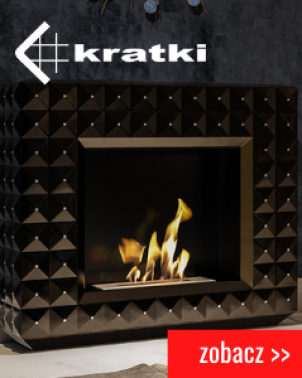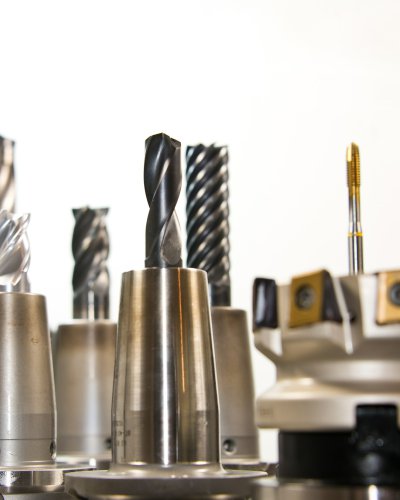Bio-fireplace is a perfect solution for people who are looking for modern solutions and at the same time want to warm up the interior of their living room or any other room in the house or apartment. Bio-fireplace emits atmospheric flames, creating a cozy atmosphere and heating the room. Unlike traditional fireplaces, it does not emit smoke or soot, so it is a completely environmentally friendly device that will appeal to all lovers of ecological solutions.
If you can not use a traditional fireplace in your home because of restrictions that have been introduced in many cities and municipalities to eliminate smog, get acquainted with the possibilities offered by bio fireplaces. A traditional fireplace requires an exhaust system for burning coal, wood or briquettes and a place for the ashes. Bio-fireplaces can work without installing any connections, just arrange them in the available space and provide air flow.
How does a bio-fireplace work?
To install a bio-fireplace in your house or apartment you do not need any additional chimney pipes. Most of the bio-fireplaces can be successfully installed by yourself, using the installation instructions attached to the product. Each bio-fireplace available on the market is equipped with a bio-pad, a very simple element consisting of a container for bio-fuel and a cover made of metal sheet.
It is into the biofuel insert that we pour biofuel using a funnel and it can be lit traditionally with a lighter (if we have a manual bio-fireplace) or it will be lit automatically with a special filament (if we have an automatic fireplace).
The result of the combustion of biofuel that we put in the biofireplace is only a small amount of carbon dioxide (comparable to that exhaled by a human being) and water vapour. This makes it possible to install a bio-fireplace in any room with proper ventilation. What else should we pay attention to? First of all, a bio-fireplace should have an extinguishing system. Usually it is installed in the form of a sliding strip or a strip placed on the bio-fireplace and it is enough to move it to cut off the oxygen and extinguish the flame. This is an additional protection in case of an uncontrolled situation such as knocking over a bio-fireplace.
It is also worth underlining that some of the bio-fireplaces available on the market have been equipped by manufacturers with special technologies supporting the safety of the user - the use of highly-absorbent ceramic fibres prevents the bio-fuel from spilling outside the container even if the fireplace is tilted or overturned. Selected models also have the ability to adjust the height of the flame with a special application.
Does a bio-fireplace give heat?
A bio-fireplace emits heat and is a perfect complement to the heating system in a block or detached house. In order to roughly determine which heat ranges we are talking about, we can assume that the heating power of individual heat sources is:
- Heating power of a room heater: 1.5-2 kW
- Heating power of a bio-fireplace: 3 kW
- Heating power of fireplace: 5-16 kW
We can calculate this as follows: to heat 10 m² we need about 1 kW of heating power. These values mean that a bio-fireplace will heat a room of 30 m². It is worth emphasizing that these are average values because there are very large bio-fireplaces available on the market which are installed e.g. in hotels or restaurants. They have even greater heating possibilities.
A lot depends also on what kind of flame control we set - whether we want a moody, subtle flame or we want a strong fire, which will certainly emit more heat. However, we must remember that classic bio-fireplaces for rooms will not give as much heat as a traditional fireplace. If you want to heat the entire house with a bio-fireplace, a fireplace with a water jacket, supporting the heating of large areas, will be better.
What types of bio-fireplaces are available on the market?
Manufacturers offer us a huge selection of bio-fireplaces. It is worth distinguishing several of them, which are the most popular:
- Free-standing bio-fireplace - usually smaller in size, we can set it up in the place of our choice, it does not require installation. Free-standing bio-fireplaces are also available in larger versions.
- Corner bio-fireplace - looks great in the corners, helps to use the extra space that is usually not used.
- A hanging bio-fireplace - this type of bio-fireplace requires assembly which is usually limited to drilling a few holes in the wall and mounting a bracket to hang it on.
- A wall mounted bio-fireplace - otherwise known as a portal bio-fireplace, they present themselves perfectly in a room - it is a classic, often chosen form. This type of a bio-fireplace can be mounted or only screwed to the wall.
- A built-in bio-fireplace - the assembly of a bio-fireplace is not complicated either, usually it is enough to prepare a niche in which we place the bio-fireplace. It is worth noting that in this type of bio-fireplaces, we can use very individual solutions.
- A bio-fireplace for the garden - for fire lovers in natural surroundings. This type of bio-fireplace is characterised by an extremely durable cover which is resistant to adverse weather conditions. It can be, for example, polyurethane resin with the addition of powdered stone or anti-corrosive steel. It is worth noting that bio-fireplaces for the garden will also work well on the terrace, balcony, and even (depending on the decor) at home.

Bio-fireplace or electric fireplace?
If you're looking for an alternative to a traditional fireplace or even a bio-fireplace, you can still consider an arrangement using an electric fireplace. What is the difference between a bio-fireplace and a fireplace? The most important and basic difference between a bio-fireplace and an electric fireplace is the flame. Bio-fireplaces as described above emit a real flame which is the result of burning bio-fuel. Electric fireplaces on the other hand do not have a real flame but only its imitation.
It should be noted that the imitation flames that are used in electric fireplaces look very realistic and it is difficult to distinguish it from a real fire. Installing an electric fireplace only requires that you connect it to a power source using a conventional outlet. Electric fireplaces can also be equipped with a heating function, so they will not only have a decorative function, but also a practical heating function.
Find out more at: boyesrees.co.uk

















Comments (0)